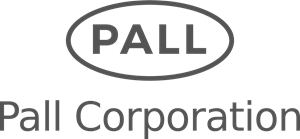The answer to this question isn’t always what the theoretical models tell us.
We wanted to see for ourselves how much the theory might differ from the real world.
So we took a walk in the neighborhood to test the theory with our sub-GHz signal strength tester.
Here is where we walked:
And here are our results:
Wireless Communication Must be Reliable
Building a wireless product involves more unknowns than just market fit and return on investment. Some are more grounded in physics, but they still affect the economics of a product.
Range is one such unknown.
But what is range?
Let’s put it simply: how far between can we place two devices and still have working communication between them.
Why does the wireless range matter?
Because if we exceed the wireless range, the network quality will suffer.
We want to avoid:
- Data loss,
- Late delivery of data,
- A reduction in the number of devices we can support,
- … and potentially even losing control of our devices – because they are out of range.
If we know what range to expect, we can answer questions like:
- How far between can you place devices?
- How many devices can you have in a network?
- How much data can you send in the network?
- What will the installation procedures look like?
These are questions are highly important from a business perspective.
How important? In one instance, wireless range led up to a 430 million lawsuit.
Theoretical Predictions: What are They?
Let’s first look at what the theory tells us.
The theory was developed in the early 1940:ies and is called the Friis equation. Loosely put, the Friis equation predicts the transmission range for a given transmission power.
Wireless chip producer Texas Instruments published a range estimator tool (swsc002a) to make it easier for people using their chips to use the Friis equation to predict the wireless range. It is a great way to see what the theory says.
You set the approximate conditions of two devices, the antenna you use, data rate and so on, and it will give you an estimated range based on the Friis transmission formula.
There is an exhaustingly large amount of factors coming into play, and we barely scratch the surface here. It’s impossible to account for everything at this stage. And this is the point - any such tool will ultimately lack simply due to all the unknowns.
But not so fast!
In the real world, radio waves are reflected, attenuated, interfered with, and the conditions will be different for each and every device you put out there. Even moving a few centimeters can mean the difference of being heard and not being heard.
The theoretical models does not account for these real-world effects.
When the Theory doesn’t match Reality
While Friis equation gives us an ok ballpark starting point, it’s impossible to apply it to the devices you deploy in the real world.
There are simply too many unknowns. And the unknowns will be different for every device. To make matters even worse, the unknowns change over time. This is just how the real world works.
So let’s see what the real world tells us!
Let’s use our Thingsquare sub-GHz signal strength tester.
By using the signal strength tester when we deploy our devices, we can avoid the worst spots from the get-go. It is a great alternative is to blindly move devices and hope to find a good spot. It is an end-to-end test, sending meaningful data in both directions, meaning asymmetric links are detected early.
And once the devices are deployed, the device will continuously monitor and report its wireless conditions so that we can see in real-time, remotely, how the network health fares.
This information is used automatically to form self-healing, efficient mesh networks where no device is left stranded and the network is efficiently utilized.
Let’s go for a Walk!
To test the theory, we took a walk with a piece of hardware in hand.
The hardware we use is the Texas Instruments LPSTK development board. It is powered by two AAA-batteries and we use the included whip antenna.
The LPSTK was connected to an access point placed behind a window at the third floor with a view across the roofs of adjacent buildings. We used the 868 MHz frequency band.
What does the Theory Predict?
We ran the Friis equations on a set of realistic parameters for transmission power, antenna gain, and antenna losses. Because those parameters are hard to know with certainty, we varied the parameters to get a range of results.
The theoretical result: we should expect a range of approximately 1800 to 2600 meters.
Do the Theoretical Results Hold in Practice?
As always, reality has the final say.
We were not able to reach the results that the theory predicted.
The maximum range we achieved was just below 850 meters – less than half of what the theory predicted.
The location with maximum range had an almost clear line-of-sight to the access point, but still had a concrete overpass in the way. We also walked across the street to see what would happen: the connection was completely cut off. There was no connectivity at all.
This also tells us that the range by itself is not always a meaningful metric. When we walked across the street, we didn’t change the distance much, but it drastically impacted the connectivity.
Signal strength varies a lot even by moving just a little.
Another observation is the extent of how the signal is reflected by buildings. Thanks to this phenomena, connectivity was found in surprising places. This is something that is very hard to express in theoretical tools such as the range estimator.
While the real world results are pretty far from the theory, the practical results aligned with our experience: urban environments are unpredictable.
So I know the Range: Now What?
Now that you know the approximate range for your devices, you may want to increase it. Or at least make the best out of the range that you already have.
There are many things one can do as a product designer or installer to increase range. Best of all, none of the following tips will require upheaval of known science.
Chose Location Wisely
The easiest way to get a good coverage is simply to choose the location of devices wisely.
Avoid the worst spots using on-site measurements like we just did. Sometimes it’s enough just to move a couple of decimeters.
Analyze your use case so a typical installation is defined, so the RF path can be properly tuned taking this into account.
Leverage Meshing
The wireless mesh will automatically extend itself when new devices are added. This can be used to increase the range – by placing new devices in strategic locations.
Radio frequency matters too. We at Thingsquare prefer using sub-GHz networking since it inherently comes with longer range and less contention than other frequencies, such as the 2.4 GHz frequency band.
Use a Better Antenna
The choice of antenna matters a lot too. Sometimes you can have a replaceable antenna and choose the antenna for each deployment.
Pick an antenna that has a proper radiation pattern that suits the deployment scenario. Note that a highly directional antenna may not be better since you need to lower the transmission output power for regulatory compliance (ETSI, FCC 15.247, and so on). It also lowers the ability for the mesh network to automatically pick a better route if the path worsens.
Conclusions
Long range networking is not easy, and even harder with all the unknowns.
Theoretical models may give a ballpark, but it is only valid for a narrow use case and it is hard to define for the real installation. Thus, it is a very coarse tool with limited usability.
The best results come when we evaluate each and every installation and refrain from using poor spots, but what is really essential is to have capabilities for run-time detection and adjustment.
If conditions deteriorate, the system must be able to detect, adjust, and cope.
The Thingsquare IoT platform gives you the tools you need to handle challenging situations, such as urban environments.
Thingsquare helps companies develop IoT products that just work – get in touch with us today to learn more!
 By Marcus Linderoth, Thingsquare VP of Engineering
By Marcus Linderoth, Thingsquare VP of Engineering








